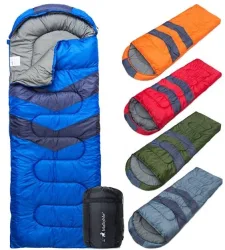What is sustainable camping gear?
2023-10-21
Sustainable camping gear refers to outdoor equipment and products designed and manufactured with a focus on environmental and social responsibility. It takes into account the ecological impact, durability, resource use, and ethical aspects of outdoor equipment to reduce harm to the environment and promote sustainability. Here are some characteristics of sustainable camping gear:
1. Materials: Sustainable camping gear is often made from eco-friendly and responsibly sourced materials. This includes recycled materials, organic fabrics, sustainably harvested wood, and non-toxic, low-impact dyes.
2. Durability: Sustainable camping gear is built to last. High-quality materials and craftsmanship ensure that products have a longer lifespan, reducing the need for frequent replacements and minimizing waste.
3. Eco-friendly Production: Sustainable gear is produced with minimal environmental impact. Companies that prioritize sustainability often use energy-efficient manufacturing processes and reduce waste and emissions.
4. Recycling and Upcycling: Some camping gear is designed with the intention of being easily recyclable at the end of its life, and some companies offer programs to take back and recycle old gear. Upcycling, the process of repurposing old gear into new products, is also part of sustainable practices.
5. Repairability: Sustainable camping gear is designed to be repairable. This means that companies provide replacement parts and repair guides, making it easier for users to extend the lifespan of their equipment.
6. PFC-Free: Sustainable gear often avoids the use of perfluorinated chemicals (PFCs) and other harmful substances in water-repellent coatings, which can harm the environment and human health.
7. Minimal Packaging: Sustainable camping gear often uses minimal and recyclable packaging to reduce waste.
8. Energy Efficiency: Some camping gear may incorporate solar panels or other features to harness renewable energy, reducing the need for disposable batteries.
9. Ethical Manufacturing: Companies producing sustainable gear may ensure fair labor practices and good working conditions for the people involved in the production process.
10. Lighter Weight: Lightweight gear can reduce the environmental impact of transportation and the energy required for manufacturing. Many sustainable gear manufacturers prioritize minimizing weight while maintaining functionality.
11. Local Sourcing: Some companies choose to source materials and manufacture products locally to reduce the carbon footprint associated with transportation.
12. Use of Second-hand or Vintage Gear: Some campers embrace sustainability by using second-hand or vintage gear, which reduces the demand for new products and extends the life of existing equipment.
13. Eco-certifications: Some sustainable camping gear may have certifications like the Bluesign system, which ensures that products meet strict environmental and safety standards.
Sustainable camping gear is part of a broader movement toward environmentally conscious outdoor recreation, which aims to reduce the negative impacts of outdoor activities on ecosystems and minimize the industry's carbon footprint. Choosing sustainable camping gear not only helps protect the environment but also supports ethical business practices and the well-being of local communities.



